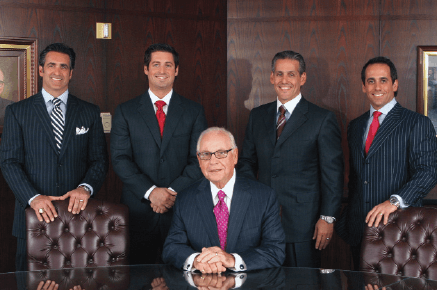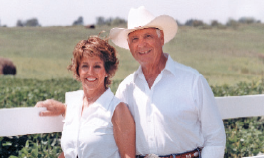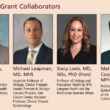Prostate Cancer: An Equal Opportunity Disease

Prostate cancer is an equal opportunity disease.
It can strike any man at any time.
And it struck Anthony. F Sansone, Sr. at age 64 in 1990.
At the time, he was the CEO of an extremely successful commercial real estate business, Sansone Group, that he had started in 1957. He was also the father of eight young adults.
Eighteen years later, at age 82, he is the chairman of the board of Sansone Group, a company that grew almost exponentially from then until the present.
Four of his sons are principals in the company, and Sansone is committed to continued expansion.
Sansone’s story is about early detection, finding the right doctor, family support, personal fortitude and prayer.

Early detection might not have occurred if he hadn’t been his own advocate. The first urologist he went to said he didn’t like his PSA and was suspicious of findings in the digital rectal exam. He advised a biopsy and it came out clear.
“The doctor said everything was okay,” Sansone said.
Then a short while later, the same doctor called and said he’d like to do a repeat biopsy.
“I decided it was time to hear an explanation and diagnosis from the best doctor in the field, and I went on a search first through friends and then through contacts at hospitals. Dr. Catalona’s name came up at the top of everyone’s recommendations.”
Sansone said that it wasn’t so easy to talk about prostate cancer in 1990. Men thought a stigma was attached to the diagnosis and they didn’t make their experiences public or, for that matter, share them with personal friends.
But Sansone was a public figure, and the media reported on his diagnosis and treatment.
“I couldn’t have kept it a secret if I wanted to. But I thought it was good to share my experiences with other men,” Sansone said.
On one of his follow-up visits, Dr. Catalona asked him to be on the board of the Urological Research Foundation.
The rest is history.
He has been President of the Board for 11 years, active in raising research funds for the URF and committed to educating people about prostate cancer.
“I have a personal commitment to prostate cancer research. I have a large family to protect. My grandfather died of it because they didn’t have the knowledge we have today. Now, we know family members can have a genetic predisposition to prostate cancer, and that men should be aware of their family histories and of the most recent research.”
Sansone is a strong believer that God has a hand in everyone’s life. He sees his connection with Dr. Catalona as an example. Soon after Sansone decided Dr. Catalona was his choice, he found himself sitting next to him at a dinner party.
Not being shy, Sansone said, “I’d like to come see you.”
Even though Sansone had an idea something might be wrong, he was devastated by the diagnosis.
“It’s just a tremendous blow, no matter how you think you might be prepared to hear the results. At first, I didn’t want to tell my family. I didn’t want them to be frightened. So I said, ‘I’ve got this situation,’ but they pushed. And I said, ‘It might be somewhat cancerous.’ Now, I can laugh, imagine ‘somewhat cancerous,’ but at the time it showed all the complicated emotions coming from the diagnosis.”
Sansone’s wife, Mary Anne, went with him to all the doctor’s appointments and was part of every decision he made.
His wife, eight children, and spouses, of those married, were in the waiting room during his operation.
“When I was rolled back to my room, I saw them all waiting for me and I gave them the ‘two thumbs up.’ It was quite a moment,” Sansone said.
At that time, he didn’t know what the results would be but he knew that he had done everything he could and that the operation was over.
Eighteen years later, he can look back at that moment with nostalgia but also welcomed relief.
Within a month he was back at work, taking it somewhat easy, but still at work. Another month and he was at full pace.
The pathology reports indicated no additional treatment was needed. He had no side effects and, most important in all these years, no recurrence.
His family life wasn’t affected and neither was his business.
Sansone is the model for Dr. Catalona’s definition of a prostate cancer
“cure” exactly the way a man was before the diagnosis and the operation.
“Dr. Catalona is the master.” Sansone said. He advises all men to research their choice of surgeon.
He has some other recommendations too.
“I think it’s best to get the treatment over with. If it’s prostate cancer, get it out and hopefully be done with it. I do think the best treatment is surgery, if possible, although every man has to make his own decision.
Sansone recommends that if family members are diagnosed with prostate cancer, the other men in the family should make sure they take the available annual tests for early detection and learn how to interpret the results, along with their doctors.
“And families shouldn’t wait for a diagnosis to get involved in research and in doing whatever they can to assist in prostate cancer studies and programs.
“Financial support for research is so important but donors should make sure they give to those organizations, such as the Urological Research Foundation, that report significant findings and share their information with other respected groups,” Sansone said.











